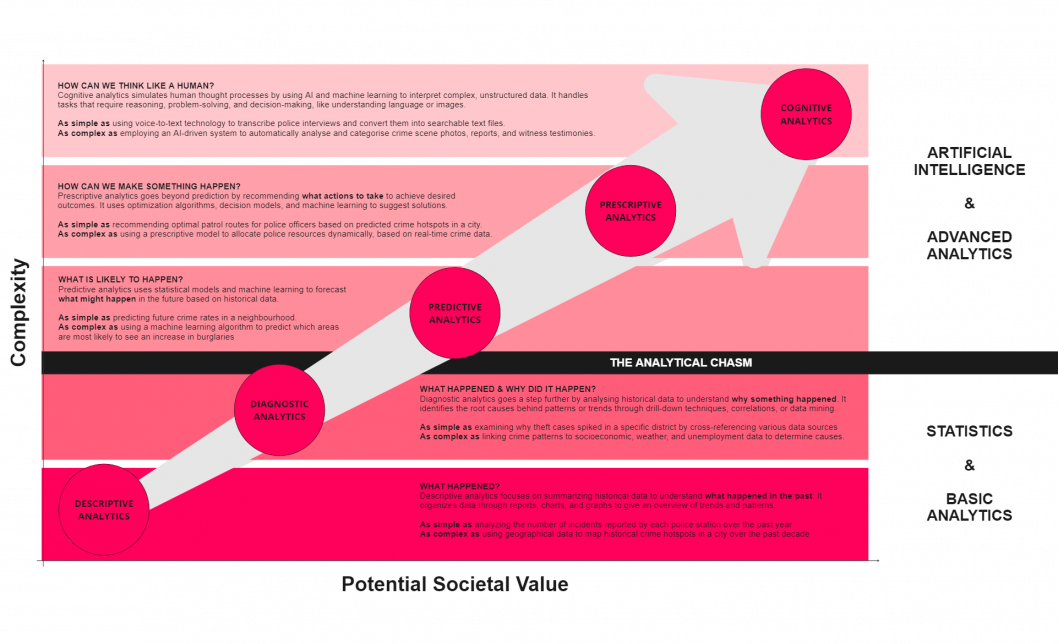
In the world of Analytics and Artificial Intelligence (AI), it’s easy to get swept up in the excitement of emerging technologies. Generative AI (GenAI) is the latest example—it is powerful, versatile, and undeniably impressive. But organisations must adopt it with care. While GenAI is the shiny new tool everyone wants to use, it’s not always the right solution. By focusing on outcome-first rather than tool/technology-first, organisations can make smarter, more impactful decisions.
Approaching a problem without proper analysis is like fixing a leaky tap with duct tape simply because it's the first tool found in the toolbox. While it may provide a temporary fix, failing to address the root cause—such as a worn-out washer or a loose pipe fitting—can lead to bigger issues down the line. Similarly, in analytics, starting with the wrong solution can result in inefficiencies and missed opportunities for meaningful impact.
We’ve seen this pattern before. When public cloud services began gaining traction, they were hailed as the answer to every IT problem. Organisations rushed to migrate, often without fully understanding their specific needs or desired outcomes. For many, this resulted in increased costs, inefficiencies, and a lack of real value. Only those who paused to ask, “What problem are we trying to solve?” achieved meaningful success.
The same lesson applies to GenAI. While it has the potential to revolutionise processes, jumping straight to GenAI without a clear understanding of the problem can lead to wasted effort and resources. In some cases, simpler solutions, like descriptive analytics, or even something totally unrelated to data, analytics or AI may be more effective. The only way to find out is to have a relentless focus on the desired outcome.
The key to successful analytics and AI initiatives is to start by clearly defining the goal before selecting the tool:
Being outcome-focused doesn’t mean avoiding innovation. GenAI and other advanced technologies have a place in solving complex problems. For example, the UK’s National Health Service (NHS) has successfully used GenAI to assist in triaging patient queries during the COVID-19 pandemic.
The problem was managing a surge in patient concerns and questions, overwhelming traditional call centres. By deploying GenAI-powered chatbots, the NHS provided accurate and timely information to citizens, freeing up healthcare professionals to focus on critical care. In this case, focusing on the outcome—efficiently managing patient inquiries—demonstrated that GenAI was the right solution. This approach highlights how aligning technology choices with clearly defined outcomes ensures meaningful results. Learn more about the NHS example here.
To further stress the importance of being outcome-driven, organisations should look to the Analytical Maturity Model—a framework that emphasises progressing through different levels of analytics maturity:
 Think of this model as a toolbox. Each level of analytics offers unique capabilities, and focusing exclusively on the top tiers, like prescriptive analytics or GenAI, without building a strong foundation in descriptive and diagnostic analytics, can lead to inefficiencies or suboptimal outcomes. Organisations should aim to climb this ladder methodically, ensuring that they have the right data quality, processes, and stakeholder buy-in at each stage. By adopting this holistic approach, organisations set themselves up for success—not just in deploying analytics and AI solutions, but in achieving their desired outcomes efficiently and effectively.
Think of this model as a toolbox. Each level of analytics offers unique capabilities, and focusing exclusively on the top tiers, like prescriptive analytics or GenAI, without building a strong foundation in descriptive and diagnostic analytics, can lead to inefficiencies or suboptimal outcomes. Organisations should aim to climb this ladder methodically, ensuring that they have the right data quality, processes, and stakeholder buy-in at each stage. By adopting this holistic approach, organisations set themselves up for success—not just in deploying analytics and AI solutions, but in achieving their desired outcomes efficiently and effectively.
Outcome-focused analytics ensures that organisations use the right tool for the job, maximising the value they derive from their investments in data and AI. Whether that tool is a GenAI-powered solution or a descriptive analytics dashboard, keeping the problem and desired outcome at the centre of decision-making is key. Only then can organisations fully realise the transformative power of analytics and AI.
Ready to unlock the full potential of your data? Get in touch to explore how we can help you drive real value and impact with AI and analytics.

Lewis Whitfield
Data & AI Consultant - Methods Analytics


